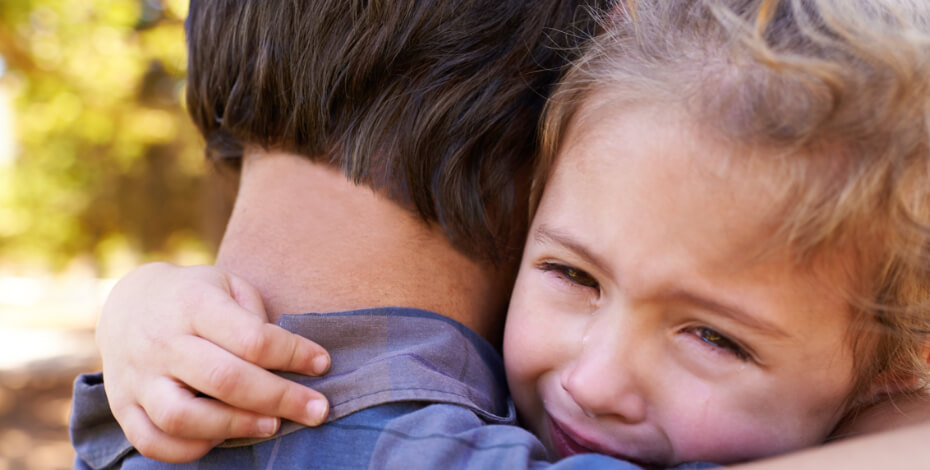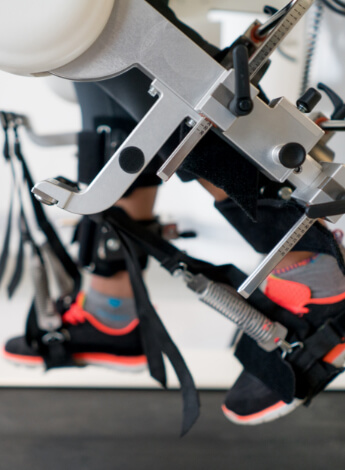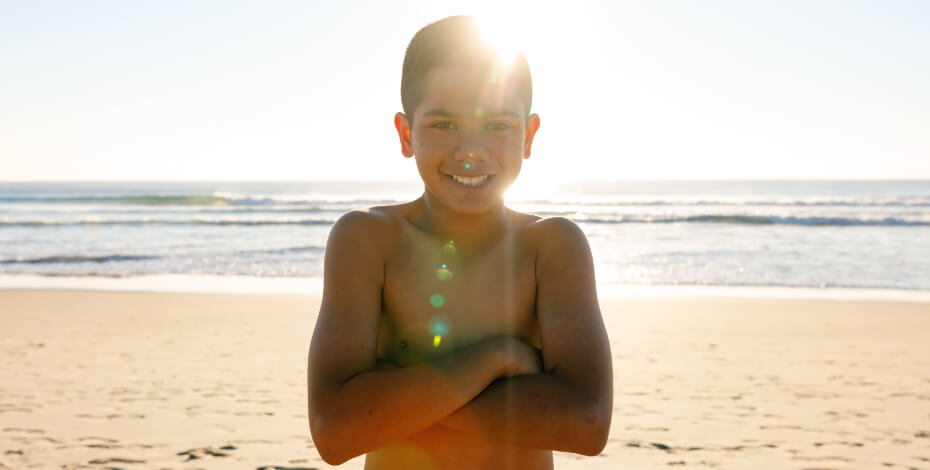
5 facts about … paediatric physiotherapy

Josh Pate, Emma McComb, Dr David Spurrier, Karen Herbert and Christine Wilson contribute five discussion points about common presentations in the paediatric patient cohort and developments in treatments for children and babies.
1. Persistent pain affects children too
Persistent pain is highly prevalent in children and adolescents and has many negative impacts. Reported prevalence rates for different types of paediatric persistent pain range from 11 to 54 per cent (King et al 2011, Swain et al 2014). An increasing number of children are presenting to hospitals for treatment of persistent pain (Coffelt et al 2013).
Persistent pain in childhood can predict persistent pain in adulthood (Hassett et al 2013) and is associated with a negative impact on the quality of life (Hunfeld et al 2001), pain-related disability (King et al 2011), school absence (Lisman-van Leeuwen et al 2013), poorer reading scores (Kosola et al 2017), and emotional distress (Zernikow et al 2012). Taking into account health service costs of $19.5 billion annually in the US (Groenewald et al 2014), and detrimental effects on a child’s mental health, paediatric persistent pain is a significant socioeconomic and health problem.
Multidisciplinary treatment, including multiple medical and allied health professionals providing a combination of medical management, physical and psychological therapy, is currently considered the most effective and appropriate treatment option (Odell et al 2013).

References
Coffelt TA (2013). Inpatient characteristics of the child admitted with chronic pain. Pediatrics. 132: e422–e429. DOI: 10.1542/peds.2012-1739
Groenewald CB et al (2014). The economic costs of chronic pain among a cohort of treatment-seeking adolescents in the United States. The Journal of Pain. 15(9): 925–933. DOI: https://doi.org/10.1016/j.jpain.2014.06.002
Hassett AL et al (2013). Reports of chronic pain in childhood and adolescence among patients at a tertiary care pain clinic. The Journal of Pain. 14(11): 1390–1397. DOI: https://doi.org/10.1016/j.jpain.2013.06.010
Hunfeld JA et al (2001). Chronic pain and its impact on quality of life in adolescents and their families. Journal of Pediatric Psychology. 26(3): 145–153. DOI: https://doi.org/10.1093/jpepsy/26.3.145
King S et al (2011). The epidemiology of chronic pain in children and adolescents revisited: A systematic review. Pain 152: 2729-2738. DOI: https://doi.org/10.1016/j.pain.2011.07.016
Kosola S et al (2017). Pain and learning in primary school: A population-based study. Pain. 158 (9): 1825–1830. DOI: 10.1097/j.pain.0000000000000984
Lisman-van Leeuwen Y et al (2013). Prognosis of abdominal pain in children in primary care - A prospective cohort study. Annals of Family Medicine. 11(3): 238–244. DOI: 10.1370/afm.1490
Odell S and Logan DE (2013) Pediatric pain management: The multidisciplinary approach. Journal of Pain Research. 6: 785-790. DOI: 10.2147/JPR.S37434
Swain MS et al (2014). An international survey of pain in adolescents. BMC Public Health. 14: 447. DOI: https://doi.org/10.1186/1471-2458-14-447
Zernikow B et al (2012). Characteristics of highly impaired children with severe chronic pain: A 5-year retrospective study on 2249 pediatric pain patients. BMC Pediatrics. 12: 54. DOI: https://doi.org/10.1186/1471-2431-12-54Accordion c
2. Robotics can enable motivating mass practice of functional skills for children in rehabilitation settings

There has been a rapid uptake of robotic devices to support physiotherapy for children with neurological impairments, both in clinical and research settings over the past 10 years (van Hedel et al 2018). These advances in robotics can assist physiotherapists with a reduction in manual handling and providing motivating, repetitive, intensive and task-specific therapy (Meyer-Heim et al 2009). There are a range of robotic devices on the market to target improvement in gait and upper limb function to help achieve therapy goals.
A review of the literature by Hilderley et al (2016) reported an association between robotic-assisted gait training and moderate-to-large improvements in gross motor and gait-related outcomes. There are also promising outcomes for upper limb training in children with cerebral palsy (El Shamy 2018). The intensity and repetition of functional movements that robotic-assisted therapy provides could have a beneficial impact in rehabilitation settings (Wallard et al 2018).
The Little Heroes Centre for Robotics and Innovation at the Women’s and Children’s Hospital, Adelaide, houses state-of-the-art, gaming-driven robotics equipment used for rehabilitation of upper and lower limb function (The Little Heroes Foundation 2016). Physiotherapists at the centre are conducting research to further investigate the impact of robotic-assisted therapies for children with cerebral palsy, acquired brain injury and cancer.
References
El-Shamy SM (2018). Efficacy of Armeo robotic therapy versus conventional therapy on upper limb function in children with hemiplegic cerebral palsy. American Journal of Physical Medicine and Rehabilitation. 97(3): 164-169. DOI: 10.1097/PHM.0000000000000852
Hilderley AJ et al (2016). Comparison of a robotic-assisted gait training program with a program of functional gait training for children with cerebral palsy: design and methods of a two group randomized controlled cross-over trial. SpringerPlus. 5(1886). DOI: https://doi.org/10.1186/s40064-016-3535-0
Meyer-Heim A et al (2009). Improvement of walking abilities after robotic-assisted locomotion training in children with cerebral palsy. Archives of Disease in Childhood. 94: 615-620. DOI: http://dx.doi.org/10.1136/adc.2008.145458
The Little Heroes Foundation (2016) https://www.littleheroesfoundation.com.au/AboutUs/News/ArtMID/460/Articl...
Wallard L et al (2018). Effect of robotic-assisted gait rehabilitation on dynamic equilibrium control in the gait of children with cerebral palsy. Gait and Posture. 60: 55-60. DOI: https://doi.org/10.1016/j.gaitpost.2017.11.007
van Hedel HJA et al (2018). Advanced robotic therapy integrated centers (ARTIC): an international collaboration facilitating the application of rehabilitation technologies. Journal of NeuroEngineering and Rehabilitation. 15(30). DOI: https://doi.org/10.1186/s12984-018-0366-y
3. Growing concern for tendon problems in children and adolescents playing sport
The skeletal system of children grows in a structured and chronological order dependent on external physical and internal systemic factors (Herbert et al 2019).
Skeletal growth is generated within the physeal growth plates of bone, and this growth ultimately determines joint and bone shape and structure. Growth of the skeletal system is longitudinal and phasic in nature with periods of rapid growth occurring in early childhood and puberty (Herbert et al 2019). This provides a dilemma for children who exercise, as the tendon attachment can undergo rapid changes in growth at times when demands of physical activity increase (Docking et al 2019). Some children who exercise regularly may experience painful tendon insertions termed apophysitis.
The tendon insertion in children and adolescents is unique anatomically. The bone attachment of tendon to bone is an area of hyaline cartilage called the apophysis that grows in response to longitudinal bone growth and is reported to not contribute to bone size or joint shape. As the apophysis matures, hypertrophy of the hyaline cartilage creates a protuberance against the tendon collagen fibres. On muscular contraction, the increased compressive and tensile forces against this can cause excessive tendon load and tendinopathy occurs (Benjamin et al 2006, Aicale et al 2018).
References
Aicale R et al (2018). Overuse injuries in sport: a comprehensive overview. Journal of Orthopaedic Surgery and Research. 13:309. DOI: https://doi.org/10.1186/s13018-018-1017-5
Benjamin M et al (2006). Where tendons and ligaments meet bone: attachment sites (‘entheses’) in relation to exercise and/or mechanical load. Journal of Anatomy. 208(4): 471-90. DOI: https://doi.org/10.1111/j.1469-7580.2006.00540.x
Docking SI et al (2019). How do tendons adapt? A narrative review. Journal of Musculoskeletal and Neuronal Interactions. Apr.
Herbert AJ et al (2019). The interactions of physical activity, exercise and genetics and their associations with bone mineral density: implications for injury risk in elite athletes. European Journal of Applied Physiology. 119(1): 29–47. DOI: https://doi.org/10.1007/s00421-018-4007-8
4. New treatment options in spinal muscular atrophy—are we on our way to a cure?
Spinal muscular atrophy is a devastating neuromuscular disorder leading to degeneration of spinal cord motor neurons, resulting in progressive muscle atrophy and weakness. Severity ranges from type 1 where babies present in the first few months and are very weak and typically do not survive beyond the second birthday, to type 3 where patients can remain ambulant for most, if not all, of their life (Serra-Juhe et al 2019).
There are several drugs in development, some in clinical trials and one, Nusinursen (Spinraza), is PBS-funded in Australia. Nusinursen is available to children up to the age of 18 presenting with symptomatic disease (Department of Health 2019). Children receiving treatment are showing maintenance or improvement in function (Farrar et al 2016). Clinical trial data indicates that early treatment can lead to better outcomes, with interim data showing presymptomatic treatment has promising results (Cure SMA 2019).
Physiotherapists can play a key role in early identification. A baby with poor head control, floppiness, absent deep tendon reflexes and delayed motor milestones should be urgently referred to a neuromuscular clinic (Ahmed et al 2016).
In NSW and the ACT, spinal muscular atrophy has been added to newborn screening. This has enabled some children to enrol in presymptomatic trials including gene therapy.
References
Ahmed MI et al (2016). A structured approach to the assessment of a floppy neonate. Journal of Pediatric Neurosciences. 11(1): 2-6. DOI: 10.4103/1817-1745.181250
Australian Government Department of Health (2019). http://www.health.gov.au/internet/main/publishing.nsf/Content/MC17-02177...
Cure SMA (2019). http://www.curesma.org/news/avexis-aan-data2019.html
Farrar MA et al (2016). Emerging therapies and challenges in spinal muscular atrophy. Annals of Neurology. 81(3): 355-368. DOI: https://doi.org/10.1002/ana.24864
Serra-Juhe C et al (2019). Perspectives in genetic counselling for spinal muscular atrophy in the new therapeutic era: early pre-symptomatic intervention and test in minors. European Journal of Human Genetics. DOI: https://doi.org/10.1038/s41431-019-0415-4

5. Twenty per cent of Aboriginal and Torres Strait Islander children have long-term respiratory conditions
Respiratory illnesses in Aboriginal and Torres Strait Islander children are serious and important, and the progression to chronic lung disease is mostly preventable. A comprehensive review (O’Grady et al 2018) showed that Indigenous children were twice as likely to be hospitalised for respiratory illness than their non-Indigenous counterparts. One in five Indigenous children had a long-term respiratory condition, most commonly asthma or bronchiectasis.
Bronchiectasis is thought to exist as part of a disease spectrum characterised by chronic wet cough, lower airway infection and inflammation (Chang et al 2015), and dilated peripheral airways. Physiotherapy involves a range of active strategies tailored to the child, family, individual pathology and functional impact. The overall principles of management combine airway clearance and prescribed physical activity.
Education for understanding of personal baseline, warning signs (eg, increased cough frequency or moistness) and exacerbation management are integral to therapy. In young children, external forces through acceleration activities (eg, swinging and bouncing) may achieve changes in airflow and breath volumes, and promote effective clearing coughs. Forced expirations are taught at an early age as a self-management strategy to aid clearance. Other approaches such as active cycle of breathing technique (ACBT) and positive expiratory pressure (PEP) therapy are used when appropriate. Specific research is needed into exercise and airway clearance in bronchiectasis (Joschtel et al 2018).
There is increasing evidence that some lung disease in adults has its roots in childhood, where it is potentially reversible (Galobardes et al 2008, Stocks et al 2013, Svanes et al 2010). Proactive early management utilises the benefits of lung growth, until at least seven to eight years of age, to prevent progression of disease and improve health outcomes for Indigenous children.
References
Chang AB et al (2015). Chronic suppurative lung disease and bronchiectasis in children and adults in Australia and New Zealand. Thoracic Society of Australia and New Zealand guidelines. Medical Journal of Australia: 202(1): 21-23.
Galobardes B et al (2008). Association between early life history of respiratory disease and morbidity and mortality in adulthood. Thorax. 63(5): 423-429. DOI: http://dx.doi.org/10.1136/thx.2007.086744
Joschtel B et al (2018). Effects of exercise training on physical and psychosocial health in children with chronic respiratory disease: a systematic review and meta-analysis. BMJ Open Sport & Exercise Medicine. 4(1): 1-11. DOI: http://dx.doi.org/10.1136/bmjsem-2018-000409
O’Grady KF et al (2018). Review of respiratory diseases among Aboriginal and Torres Strait Islander children. Australian Indigenous Health Bulletin 18(2).
Stocks J et al (2013). Early life influences on the development of chronic obstructive pulmonary disease. Therapeutic Advances in Respiratory Disease. 7(3): 161-173. DOI: https://doi.org/10.1177/1753465813479428
Svanes C et al (2010). Early life origins of chronic obstructive pulmonary disease. Thorax. 65(1): 14-20. DOI: http://dx.doi.org/10.1136/thx.2008.112136
Joshua Pate, APAM, is a senior physiotherapist at Westmead Hospital’s pain management centre. Joshua’s PhD at Macquarie University is an investigation into a child’s concept of pain: how a child thinks about the ‘what’, ‘why’ and ‘how’ of pain. You can contact him at joshua.pate@mq.edu.au or on Twitter @JoshuaWPate.
Emma McComb, APAM, works in paediatrics and disability in south-east Queensland. Emma was awarded first class honours for her project, ‘Robotic assisted gait training for Children with Cerebral Palsy’ at the University of South Australia.
Dr David Spurrier is a private practice musculoskeletal and sports physiotherapist with a strong clinical interest in children and adolescent sport injuries. David has extensive experience in physiotherapy to community, state and national sports teams and also in management of bone injuries.
Karen Herbert is the neurology clinical lead physiotherapist at Sydney Children’s Hospital (SCH), Randwick. Karen has experience in the areas of acute neurology, community and rehabilitation. She is the neuromuscular clinical research physiotherapist working with clinical trials and in-house research at SCH.
Christine Wilson, FACP, works as a senior physiotherapist in the respiratory physiotherapy service at Queensland Children’s Hospital, Brisbane. Chris has had clinical and research roles particularly in paediatric cystic fibrosis, bronchiectasis, and airway malacia. She is a pioneer for physiotherapy services in the Indigenous Respiratory Outreach Care (IROC) program.
© Copyright 2024 by Australian Physiotherapy Association. All rights reserved.





